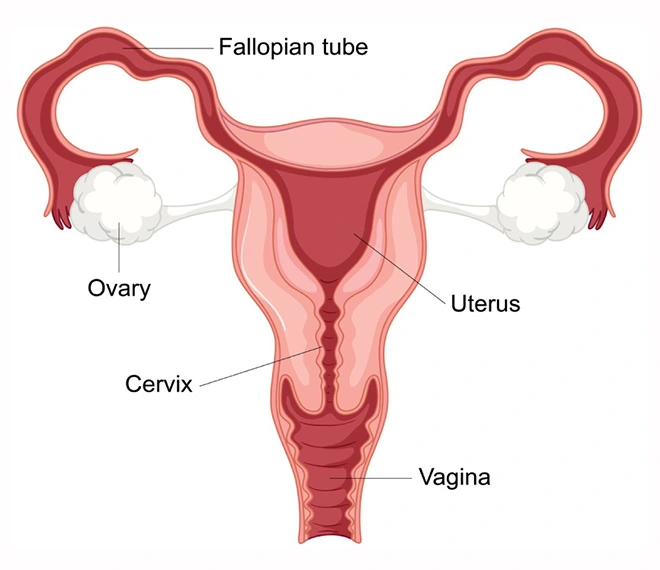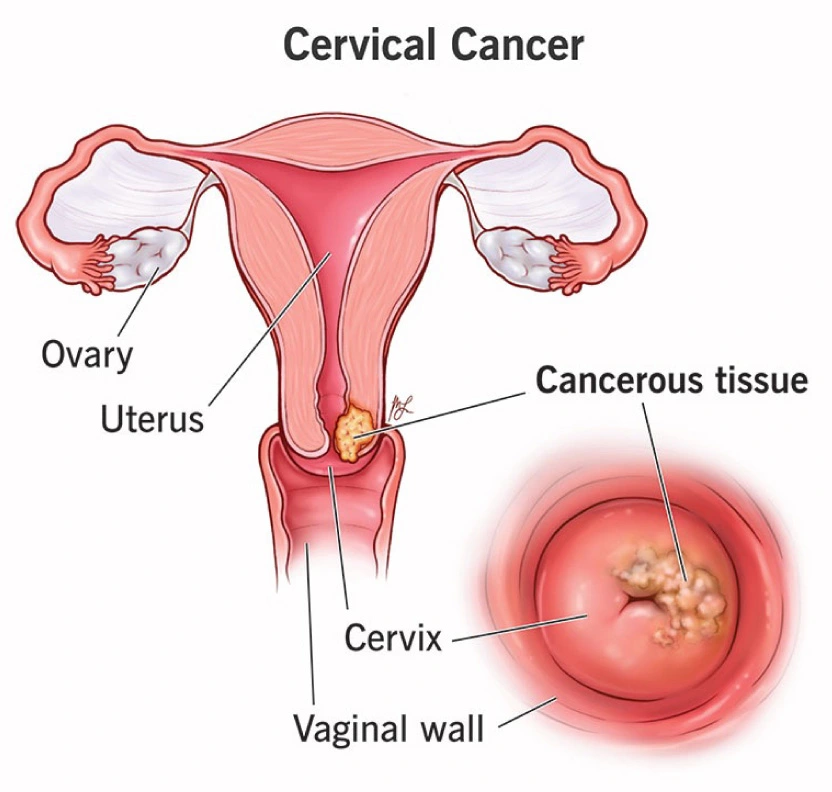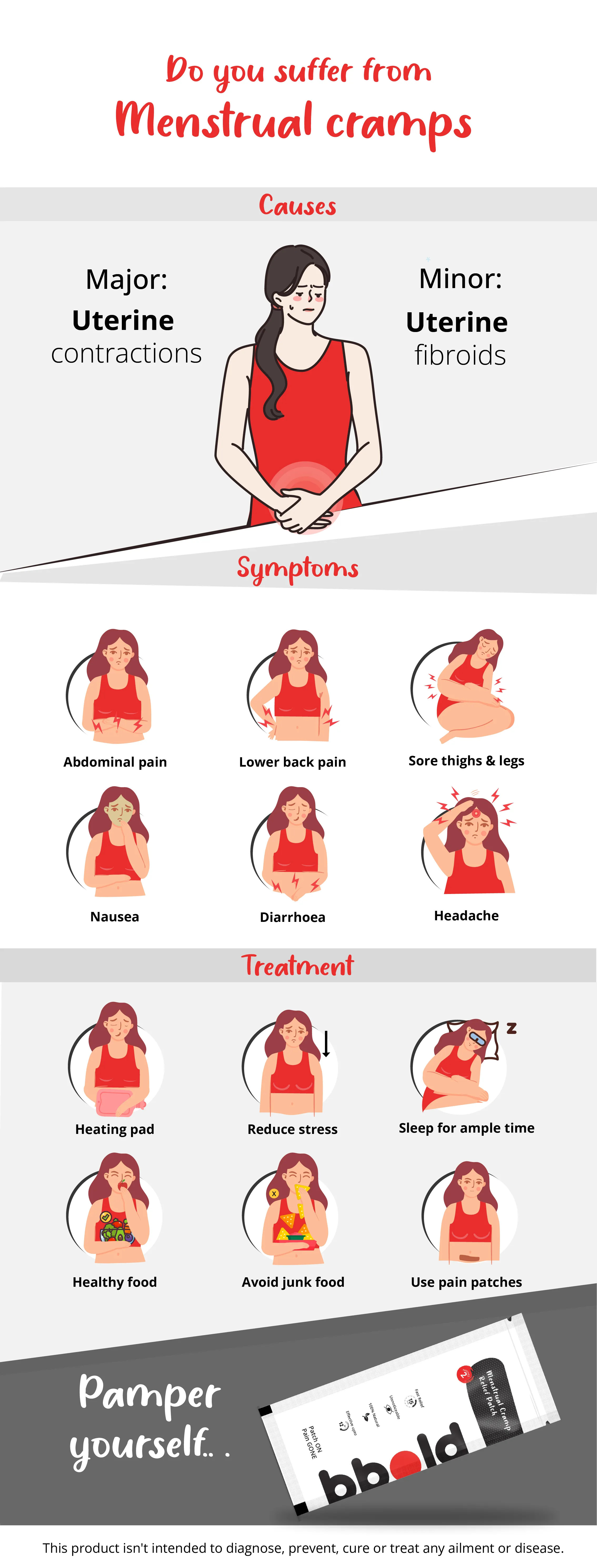05 Feb, 2024
Unveiling the Battle Against Cervical Cancer, Let's Talk Causes, Symptoms, and Hopeful Solutions.

Cervical cancer is a type of cancer that affects the cervix. It is one of the most common cancers among women worldwide. In this blog post aims to unravel the intricacies of cervical cancer, addressing the pivotal questions: when women should commence testing, what are the telltale signs to watch for, and shedding light on the statistics surrounding cervical cancer in India. Furthermore, we'll delve into recent updates, celebrity support, unfortunate losses to cervical cancer, and various facets of this critical health issue. Let's embark on this informative journey!
Hey there, bbold community! Today, we're piercing into a topic that demands your attention and solidarity - Cervical cancer. In the wake of recent events, it's crucial for us to understand the enemy we're up against and how we, as a community, can navigate through it together. So, buckle up for an emotional and informative ride as we explore the causes, symptoms, and treatment options, all wrapped up with a dash of bbold's unique touch.

What is cervical cancer?
Cervical cancer is a type of cancer that affects the cervix, the lower part of the uterus that connects to the vagina. It occurs when cells in the cervix start to grow uncontrollably, leading to the formation of abnormal cells.

Causes: The Sneaky Culprit
Cervical cancer is often triggered by persistent infections of high-risk HPV. It's like an uninvited guest that overstays its welcome, wreaking havoc on the cervix. But here's the catch - not all HPV infections lead to cancer. Some magically disappear on their own, while others linger. The risk factors are smoking, weakened immune system, and not getting regular screenings.
Type of Cervical cancer
Cervicale cancer can be categorized into two main types: squamous cell carcinoma and adenocarcinoma. Squamous cell carcinoma is the most common type, originating in the thin, flat cells lining the cervix. Adenocarcinoma develops in the glandular cells of the cervix.
Symptoms
- The Silent Whispers
- The tricky part about cervical cancer is that it's often a silent intruder, lurking in the shadows without giving away its presence. However, there are subtle whispers that demand attention.
- Irregular bleeding
- Pelvic pain
- Discomfort during intercourse.
- Painful urination
When should women start getting tested?
Regular cervical cancer screenings are crucial for early detection and prevention. The American Cancer Society recommends that women with a cervix start getting screened at age 25. From ages 25 to 65, women should have a primary HPV test every five years. Alternatively, women can opt for a combination of a Pap test and an HPV test every five years, or a Pap test alone every three years.
It's important to note that these recommendations may vary depending on the country and individual risk factors. Consulting with a healthcare professional is essential to determine the appropriate screening schedule.
Cervical cancer statistics in India
Cervical cancer is a significant public health issue in India. According to the Indian Council of Medical Research (ICMR), cervical cancer accounts for 17% of all cancer cases among Indian women, with approximately 122,000 new cases and 67,000 deaths each year.
Factors contributing to the high incidence of cervical cancer in India, include lack of awareness, limited access to healthcare facilities, inadequate screening programs, and low HPV vaccination rates. Additionally, socioeconomic disparities and cultural barriers further exacerbate the problem.
Efforts are being made to address these challenges through increased awareness campaigns, improved screening programs, and HPV vaccination initiatives.
Treatment Options
Illuminating the Path to Hope
Now, let's talk about the silver lining - treatment options. Early detection is the superhero in this story, offering a higher chance of successful treatment. From surgeries and radiation to targeted drug therapies, there's a range of options tailored to the individual's needs. And here's where bbold steps in not as a mere spectator but as a companion on this journey.
Various kinds of Diagnosis for Cervical Cancer
Pap Smear (Pap Test)
A screening test where cells from the cervix are collected and examined for abnormal changes. Abnormal results may lead to further diagnostic tests.
HPV Test
This test detects the presence of high-risk human papillomavirus (HPV) types, which can increase the risk of cervical cancer.
Colposcopy
Using a colposcope to examine the cervix for abnormal areas. If suspicious lesions are found, a biopsy may be performed.
Biopsy
Removal of a small tissue sample from the cervix for laboratory analysis to confirm the presence of cancer and determine its type and stage.
Imaging Studies
X-rays, CT scans, MRI, or PET scans may be used to assess the extent of cancer spread to nearby tissues and organs.
Various kinds of Treatment options available for Cervical Cancer
Surgery
Removal of the tumor and surrounding tissues.
Radiation Therapy
Using high-energy rays to target and destroy cancer cells.
Chemotherapy
Administering drugs to kill or slow the growth of cancer cells.
Targeted Therapy
Specific drugs targeting specific molecules involved in cancer growth.
A Call for Cervical Cancer Awareness
In a surprising turn of events, Poonam Pandey, at 32, captured the nation's attention by orchestrating a unique Cervical Cancer Awareness Stunt. Contrary to earlier reports of her demise due to the disease, Poonam took a bold step to draw widespread attention to the urgency of Cervical Cancer Awareness. This unconventional effort, which caused a stir across the country, highlighted the critical need for open conversations and proactive health measures. While opinions on her approach may vary, there's no denying that Poonam's initiative succeeded in shaking the collective consciousness, prompting discussions on the importance of early detection and regular screenings.
Amid this buzz, let's not forget the ongoing efforts of advocates like Jahnavi Kapoor, whose commitment to celebrity awareness outreach ads plays a crucial role in encouraging women to prioritize their reproductive health. This unexpected twist underscores the power of unconventional methods in sparking conversations that ultimately contribute to the broader goal of saving lives through awareness and early intervention.
Conclusion
bbold Be Safe
As we wrap up this emotional journey through the realm of cervical cancer, remember that you're not alone. bbold is more than a brand; it's a community built on support, awareness, and a shared commitment to women's well-being. Together, we can face the challenges, celebrate victories, and navigate this journey with grace and resilience. Let's be bolder, braver, and safer together - because your health is worth every ounce of care and love.




